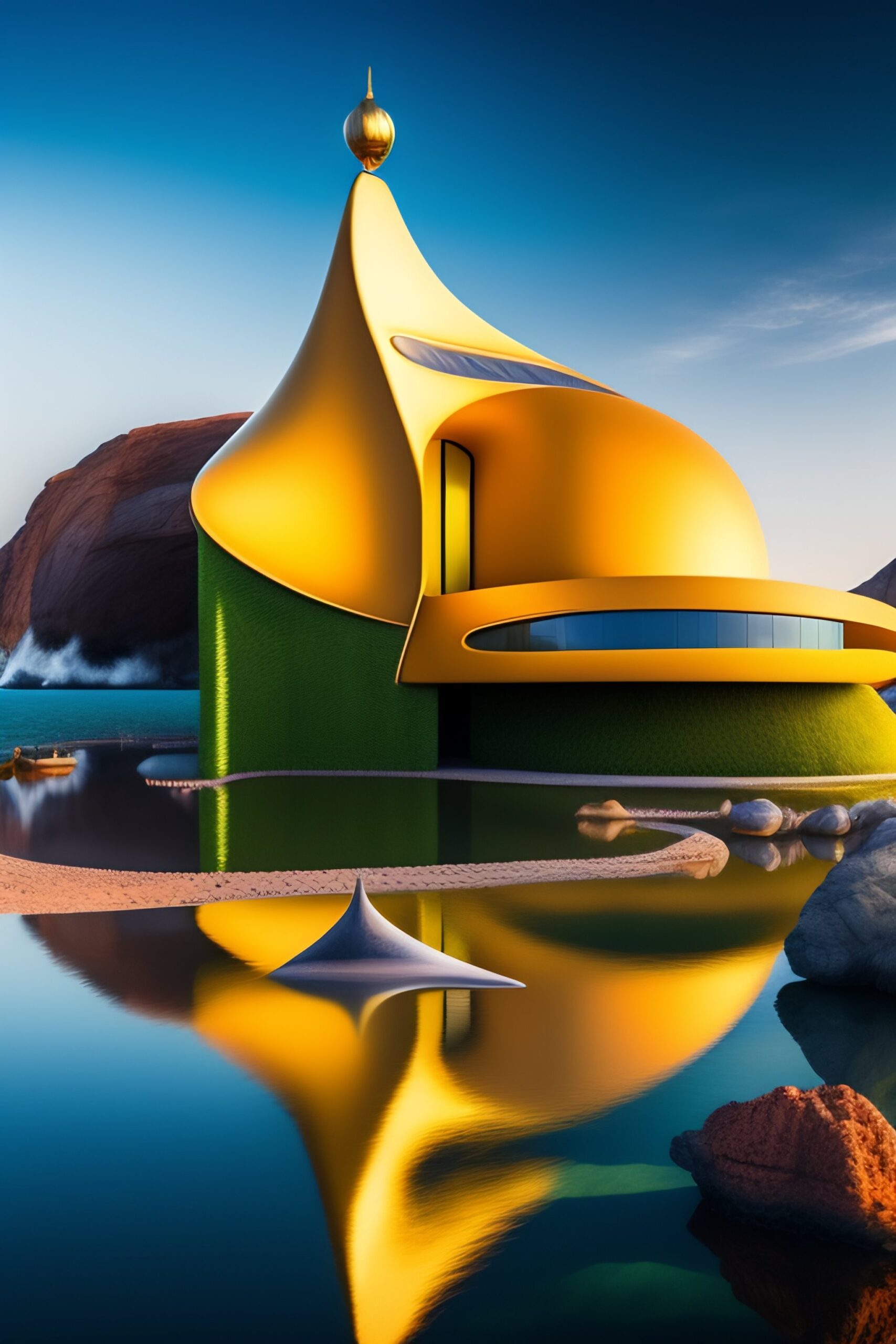Ah, Organic Modernism. A design philosophy that feels like a calm walk through a lush forest, the fresh scent of rain on leaves, the soothing sound of a babbling brook. But what exactly is it? How did it come about? And more importantly, how can you incorporate it into your own space? Fear not, curious reader! We’re here to unravel the enigma of organic modernism.
Introduction
In the realm of design, where trends come and go like the changing seasons, one movement has emerged as a timeless embodiment of beauty, functionality, and a deep connection with nature—Organic Modernism. This design philosophy transcends mere aesthetics, offering a harmonious blend of natural forms, sustainable materials, and functional design elements. Join us on a journey as we explore the birth, principles, and contemporary relevance of organic modernism, and discover how you can incorporate its essence into your own space.
The Birth of Organic Modernism
Picture this. It’s the early 20th century. The world is basking in the glow of the Industrial Revolution. Machines are all the rage. Mass production is the name of the game. But in the realm of design and architecture, a revolution is brewing.
Bristling against the rigidity and soullessness of industrial production, a group of avant-garde designers and architects started to crave a return to nature. They yearned for softer lines, natural materials, and a sense of warmth and intimacy that seemed lost in a world of steel and smoke.
Thus, organic modernism was born. Like a phoenix rising from the ashes of industrialization, it heralded a new age of design—an age where man-made structures could coexist in harmony with nature, an age where form and function were beautifully intertwined. A perfect blend of nature, function, and modern aesthetics.
Influential Figures
As with any movement, organic modernism had its champions. Architects and designers like Frank Lloyd Wright and Alvar Aalto were trailblazers, bringing the principles of organic modernism to the forefront of design.
Frank Lloyd Wright
Considered the godfather of organic architecture, Frank Lloyd Wright was a visionary. Wright’s philosophy of ‘organic architecture’ laid the foundation for organic modernism. His iconic buildings, like Fallingwater, integrated seamlessly with their natural surroundings. His genius was in his ability to blur the lines between the built and the natural environment, creating structures that were in harmony with the landscape rather than imposing on it.
Alvar Aalto
A pioneer in his own right, Finnish architect and designer Alvar Aalto took the principles of organic modernism and applied them not just to buildings, but to furniture and even everyday objects. His furniture designs, with their smooth, flowing lines and natural materials, brought a touch of nature into the home. Aalto’s work was characterized by a respect for the material, a keen understanding of human needs, and a desire to enhance the human experience.
Principles of Organic Modernism
Organic modernism is like a multi-layered cake, and we’re here to dissect it layer by layer. Let’s take a look at the main ingredients that make up this delectable design philosophy.
Embracing Nature
At the heart of organic modernism is a deep reverence for nature. Nature isn’t just a source of inspiration; it’s the star of the show. Organic modernists sought to translate the beauty and complexity of nature into their designs, featuring natural forms, textures, and materials. Think of furniture that mirrors the curvature of a seashell, or a building that flows like a meandering river. This is organic modernism in action.
Function and Form
Unlike Aunt Mabel’s antique vase, organic modernism isn’t about things that are only there to look pretty. It’s about balancing aesthetics with function. Each piece of furniture, each building, every design element serves a purpose and does it beautifully. In the world of organic modernism, form follows function, and the result is a seamless integration of utility and style.
Respect for Materials
In organic modernism, materials aren’t just tools; they’re partners in the creative process. Organic modernists treat materials like a barista treats coffee beans—with a deep appreciation for their unique characteristics and potential. Wood isn’t just wood; it’s an opportunity to showcase its grain, texture, and warmth. Stone isn’t just stone; it’s a chance to celebrate its solidity and permanence. Every material is seen as an opportunity to bring a slice of the natural world into the built environment.
Organic Modernism in Today’s World
While its roots may lie in the 20th century, organic modernism is far from being a relic of the past. In fact, it’s the cool grandparent who’s not just fit but has swag to boot. From influencing interior design to inspiring sustainable practices, it continues to shape our world in subtle yet significant ways.
Revitalizing Interior Design
In today’s age of Pinterest-perfect homes and Instagrammable corners, organic modernism is making a big splash. Its emphasis on natural materials, functional forms, and serene aesthetics resonates with people who crave a sense of calm and simplicity in their spaces. It’s about creating homes that are not just beautiful but also nurturing—spaces that cocoon you from the frenetic pace of the outside world.
Driving Sustainable Practices
In a world that’s increasingly conscious of its carbon footprint, organic modernism’s focus on natural, durable materials, and respect for the environment has struck a chord. It’s inspiring a new generation of architects and designers to rethink the way we build and consume. The sustainable ethos of organic modernism is now reflected in the use of reclaimed wood, recycled materials, and energy-efficient designs. It’s like giving a high-five to Mother Nature!
Spurring Innovation in Furniture Design
From curvaceous couches to ergonomic desks, organic modernism has a profound influence on contemporary furniture design. It champions the idea that good design should not only be visually appealing but should also enhance the human experience. Designers are now creating pieces that are not just functional and beautiful but also foster well-being—think chairs that support good posture, tables that encourage community, and beds that promote restful sleep.
Promoting Well-being and Mindfulness
Organic modernism isn’t just about physical design. It promotes an ethos of living in harmony with nature, which extends to cultivating a lifestyle of well-being and mindfulness. This can be seen in the popularity of indoor plants, Zen-inspired interiors, and even the trend of digital detox. By creating spaces that inspire tranquility and encourage disconnection from our often chaotic digital lives, organic modernism helps cultivate a more mindful, grounded lifestyle.
How to Incorporate Organic Modernism in Your Space
Ready to infuse your space with the essence of organic modernism? Here are some practical tips to help you bring the spirit of nature and functional beauty into your home.
Living Room
In the living room, select furniture with organic shapes and natural materials. Consider a curvaceous sofa, a coffee table made from reclaimed wood, or a rug inspired by natural textures. Add touches of greenery with potted plants or incorporate artwork that depicts natural landscapes.
Kitchen
In the kitchen, opt for sleek cabinets made from sustainable materials such as bamboo or recycled wood. Choose countertops in natural stone or engineered materials that mimic the patterns found in nature. Incorporate open shelving to display ceramic dishes or glassware inspired by natural elements.
Bedroom
Create a serene bedroom retreat by selecting a bedframe crafted from organic materials like solid wood or rattan. Choose bedding in soothing colors and natural fibers for a cozy and tranquil atmosphere. Introduce soft lighting and natural textures through bedside lamps, woven baskets, or textured wall art.
Home Office
Design a home office that merges function with organic aesthetics. Select a desk with clean lines and natural finishes, accompanied by an ergonomic chair for comfort. Incorporate indoor plants to improve air quality and add a sense of serenity. Natural lighting and a connection to outdoor views can enhance focus and productivity.
Conclusion
In a world where modern living often feels disconnected from nature, organic modernism emerges as a guiding light. It offers a harmonious blend of aesthetics, functionality, and sustainability, celebrating the beauty of the natural world within our built environment. By embracing nature, prioritizing function and form, and respecting materials, organic modernism inspires spaces that nourish our souls, enhance our well-being, and remind us of our intrinsic connection to the Earth.
Unleash the transformative power of organic modernism in your own space and create an oasis of calm, where nature and design embrace in perfect harmony. Open the door to a world where the beauty of the organic meets the functionality of the modern.
FAQs
What is organic modernism? Organic modernism is a design philosophy that integrates natural forms and materials, functional design, and modern aesthetics. Its aim is to create spaces and objects that feel harmonious and are in touch with nature.
Who were the key figures in organic modernism? Frank Lloyd Wright and Alvar Aalto were among the key figures of organic modernism. Their works beautifully embody the principles of this design philosophy.
How can I incorporate organic modernism into my own space? You can start by selecting furniture and décor with organic forms and natural materials. Prioritize functional design, and bring elements of nature inside—be it through indoor plants, natural textures, or a nature-inspired color palette.
Is organic modernism the same as mid-century modern? While both styles emerged around the same time and share a love for function and form, they aren’t identical. Mid-century modern is more geometric and minimalist, while organic modernism leans toward natural forms and materials.
What’s the relevance of organic modernism today? In today’s age of sustainability and mindfulness, organic modernism aligns well with current design trends favoring natural materials and sustainability. Plus, it’s a win-win for anyone seeking modern design that doesn’t skimp on warmth or functionality.
How can I incorporate organic modernism into my own space? You can start by selecting furniture and décor with organic forms and natural materials. Prioritize functional design, and bring elements of nature inside—be it through indoor plants, natural textures, or a nature-inspired color palette.
Is organic modernism the same as mid-century modern? While both styles emerged around the same time and share a love for function and form, they aren’t identical. Mid-century modern is more geometric and minimalist, while organic modernism leans toward natural forms and materials.




